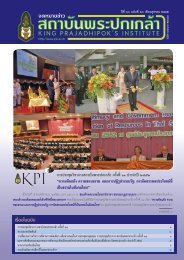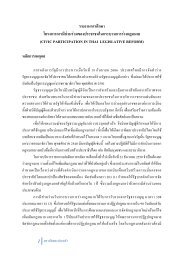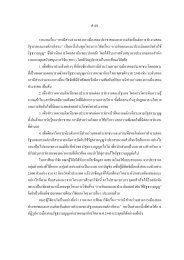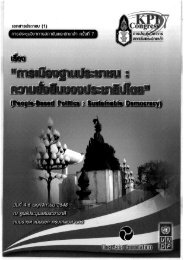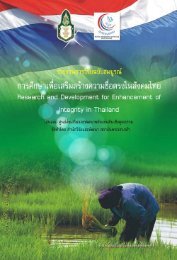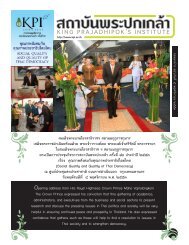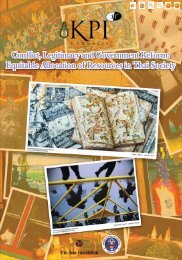SUFFiciENcy EcONOMy ANd GRASSROOtS DEvElOPMENt
SUFFiciENcy EcONOMy ANd GRASSROOtS DEvElOPMENt
SUFFiciENcy EcONOMy ANd GRASSROOtS DEvElOPMENt
You also want an ePaper? Increase the reach of your titles
YUMPU automatically turns print PDFs into web optimized ePapers that Google loves.
194<br />
The Meaning of Sufficiency Economy <br />
International Conference<br />
reliance and a sustainable future(อุดมพร อมรธรรม 2549). From then on, social capital<br />
along with other concepts in the same category such as self-reliance, sufficiency and<br />
moderation were heavily promoted as the national values by Thai governments.<br />
Recently, the Thai National Economic and Social Development Board recognised<br />
the concept of social capital as a scheme of country development in Thailand’s 10 th<br />
national economic and social development plan (this plan covered the country’s<br />
development strategies from 2007?2011).<br />
Definition of social capital<br />
There are several definitions of social capital. In the broadest sense, social<br />
capital is a type of asset. It was differentiated from two other well-known capitals:<br />
financial capital and human capital. While people’s financial capital was the amount<br />
in their bank account, and their human capital was what was in their head or their<br />
ability to perform the task, their social capital could be found in the structure of their<br />
relationships(Portes 1998). Leading scholars accepted that social capital could be<br />
both an individual asset and a community attribute. Bourdieu defined this notion as<br />
“the aggregate of the actual of potential resources which are linked to possession of<br />
a durable network of more or less institutionalized relationships of mutual<br />
acquaintance or recognition”(Bourdieu 1986). Coleman defined social capital<br />
through its function. Coleman’s social capital included the entities in the social<br />
structures that facilitate certain actions of person or the communities who belonged<br />
to those structures. More recently, Putnam’s definition of social capital as “the<br />
connections among individuals–social networks and the norms of reciprocity and<br />
trustworthiness that arise from them(Putnam 2000)”, was the most widely accepted.<br />
Used in a practical perspective, a simplified categorisation of social capital<br />
was proposed. Two perspectives of social capital: cognitive and structural (Bain et<br />
al. 1998, cited in De Silva 2005) were widely accepted(De Silva et al. 2005). The<br />
cognitive social capital, what people “feel”, referred to the individual’s<br />
characteristics such as trust and reciprocity, while the structural social capital could<br />
be found in what people “do” which referred to group participation and networking.<br />
Social capitaland Sufficiency Economy in Thai’s context<br />
The Thai National Economic and Social Development Board (NESDB)<br />
adjusted the definition of social definitions to fit Thai’s social context in their 10 th<br />
economic and social development plan (2007-2011)(สำนักงานคณะกรรมการพัฒนาเศรษฐกิจ<br />
และสังคมแห่งชาติ 2549). In Thai social context, social capital was the structure of the<br />
relationships of four elements: people, institution, culture and knowledge. The<br />
people element included their morality, their ability and wisdom, while the<br />
institution were family, religion, politics and administration, education, business and<br />
the media. The element of culture included the belief, faith, social norm; moreover,<br />
the historical buildings, sites and objects were also included in this group. Unlike the<br />
definitions given by Seeman(Seeman and Berkman 1988) and Schwarzer(Schwarzer



